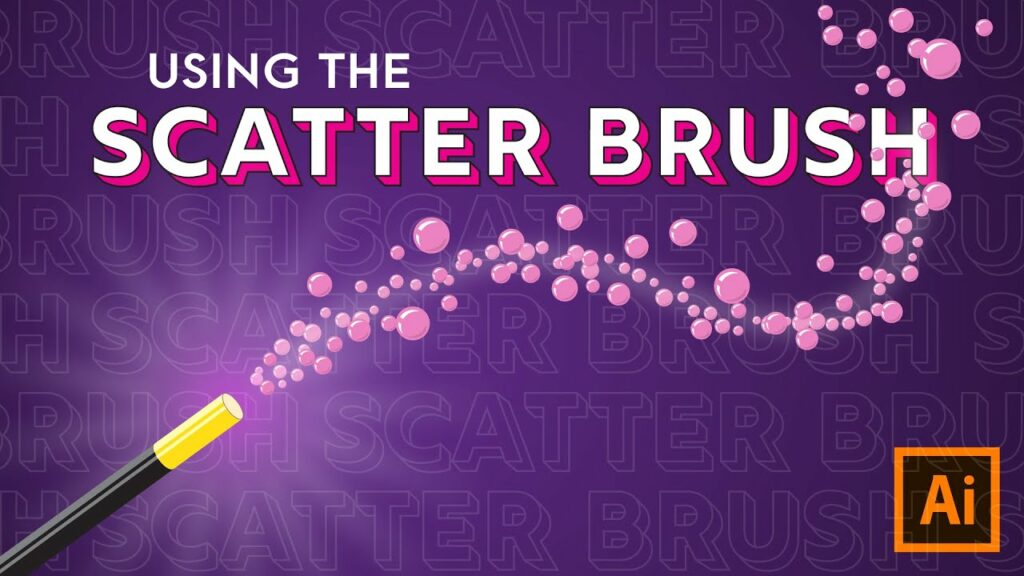Mastering the Art of Digital Illustration: A Comprehensive Guide to Utilizing the Scatter Brush Tool in Adobe Illustrator

Introduction:
In the realm of digital illustration, Adobe Illustrator stands as a powerhouse software, empowering artists to create captivating visuals with precision and finesse. Among its arsenal of tools, the scatter brush tool emerges as a versatile instrument, capable of adding depth, texture, and dimension to artworks. Whether you’re a seasoned illustrator or an aspiring artist, understanding how to effectively wield the scatter brush tool can significantly enhance your creative endeavors.
Chapter 1: Understanding the Scatter Brush Tool in Adobe Illustrator
At its core, the scatter brush tool in Adobe Illustrator is a brush variant that disperses multiple instances of a selected brush tip along the stroke path, creating a scattered effect. Unlike traditional brushes, the scatter brush offers extensive customization options, allowing artists to control parameters such as scatter, count, size, and rotation. This versatility opens up a myriad of creative possibilities, from creating intricate textures to adding dynamic elements to illustrations.
Chapter 2: Configuring Scatter Brush Settings
Before diving into practical applications, it’s essential to familiarize yourself with the various settings available for the scatter brush tool in Adobe Illustrator. Accessible through the brush panel, these settings enable artists to fine-tune the brush to achieve desired effects. Parameters such as scatter, count, size jitter, and rotation jitter can be adjusted to tailor the brush to specific artistic visions. Experimentation is key to finding the perfect balance of settings for optimal results.
Chapter 3: Creating Dynamic Textures and Patterns
One of the primary uses of the scatter brush tool in Adobe Illustrator is the creation of dynamic textures and patterns. By varying parameters such as scatter, size, and rotation, artists can simulate a wide range of textures, from natural elements like foliage and rocks to abstract patterns and motifs. Whether it’s adding depth to an illustration or embellishing a design with intricate details, the scatter brush offers unparalleled flexibility in texture creation.
Chapter 4: Adding Depth and Dimension to Illustrations
Beyond texture creation, the scatter brush tool can also be utilized to add depth and dimension to illustrations. By strategically applying the brush to artwork, artists can simulate effects such as depth of field, atmospheric perspective, and dynamic movement. Whether it’s scattering stars across a night sky, creating a shimmering water surface, or adding foliage to a landscape, the scatter brush tool allows for the creation of visually captivating illustrations with depth and dimension.
Chapter 5: Exploring Creative Applications
The versatility of the scatter brush tool extends beyond texture creation and illustration enhancement. Artists can explore a myriad of creative applications, from creating decorative elements and embellishments to adding whimsical accents and flourishes. By combining the scatter brush with other Illustrator tools and techniques, such as blending modes, opacity masks, and gradient fills, artists can push the boundaries of their creativity and unlock new possibilities in digital illustration.
Conclusion:
In the hands of a skilled artist, the scatter brush tool in Adobe Illustrator becomes a powerful instrument for unleashing creativity and bringing illustrations to life. By understanding its capabilities and experimenting with its settings, artists can elevate their artwork to new heights, adding depth, texture, and dimension with ease. Whether you’re a seasoned illustrator or a newcomer to digital art, mastering the scatter brush tool opens up a world of possibilities for creating captivating visuals that resonate with audiences.





